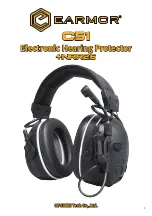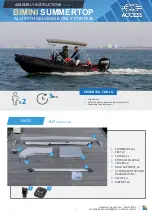
IAI3001D-01
Page 3 of 8
07/18
5.
Tighten mounting bolts, making sure actuator is centered on the valve/damper drive shaft.
6.
Utilize the handwheel to check for unobstructed manual operation from fully CW to fully CCW positions.
(See “Manual Override” section below.)
7.
Remove the cover and make the electrical connections as per the wiring diagram. Typical connections have
AC Neutral or DC (-) to terminal 1 and AC Live or DC (+) to terminal 3 or 4. Connection to terminal 3 to OPEN
(CCW). Connection to terminal 4 to CLOSE (CW).
8.
For models where auxiliary switches are provided, terminals A - F are for 2 x SPDT adjustable auxiliary
switches. They are dry type Form C rated 5A @ 250V AC max. Terminals A, B & C are for the OPEN position
auxiliary switch (adjustable). Terminals D, E & F are for the CLOSE position auxiliary switch (adjustable).
9.
Connect the ground wire to PE inside the electric actuator.
10.
Replace cover and secure cover screws.
11.
Do NOT apply power at this time. See “Commissioning” section below.
12.
Check below explanation of Duty Cycle. The intended service should not go above the maximum duty cycle
as noted on the actuator nameplate.
Installation Notes
•
These actuators are designed to be used between a horizontal and upright position. Do NOT mount the
assembly with the actuator top below a horizontal position.
•
When installing conduit, use proper techniques for entry into the actuator. It is preferred that the conduit
entries face downward. Use drip loops to prevent conduit condensate from entering the actuator. Use proper
fittings to maintain the NEMA 4X integrity of the housing. Seal (pot) the conduit entries.
•
Use proper wire size to prevent actuator failure. All terminals accept 12 -18AWG solid/stranded wire.
•
Mechanical travel stops are factory calibrated for 90° operation. These stops are NOT designed to adjust
mechanical rotation by more than +/- 3°. They are for positioning the handwheel only.
•
Do NOT touch any components on the PCB with metal tools or bare hands.
•
The internal heater is to be used in all applications. Do NOT install the actuator outdoors or in humid
environments unless it is powered up and the heater is functioning.
•
Do NOT parallel wire multiple actuators together without utilizing isolation relays. If this is your intention,
please contact Innovative Actuation Incorporated for a multiple actuator parallel wiring diagram.


























